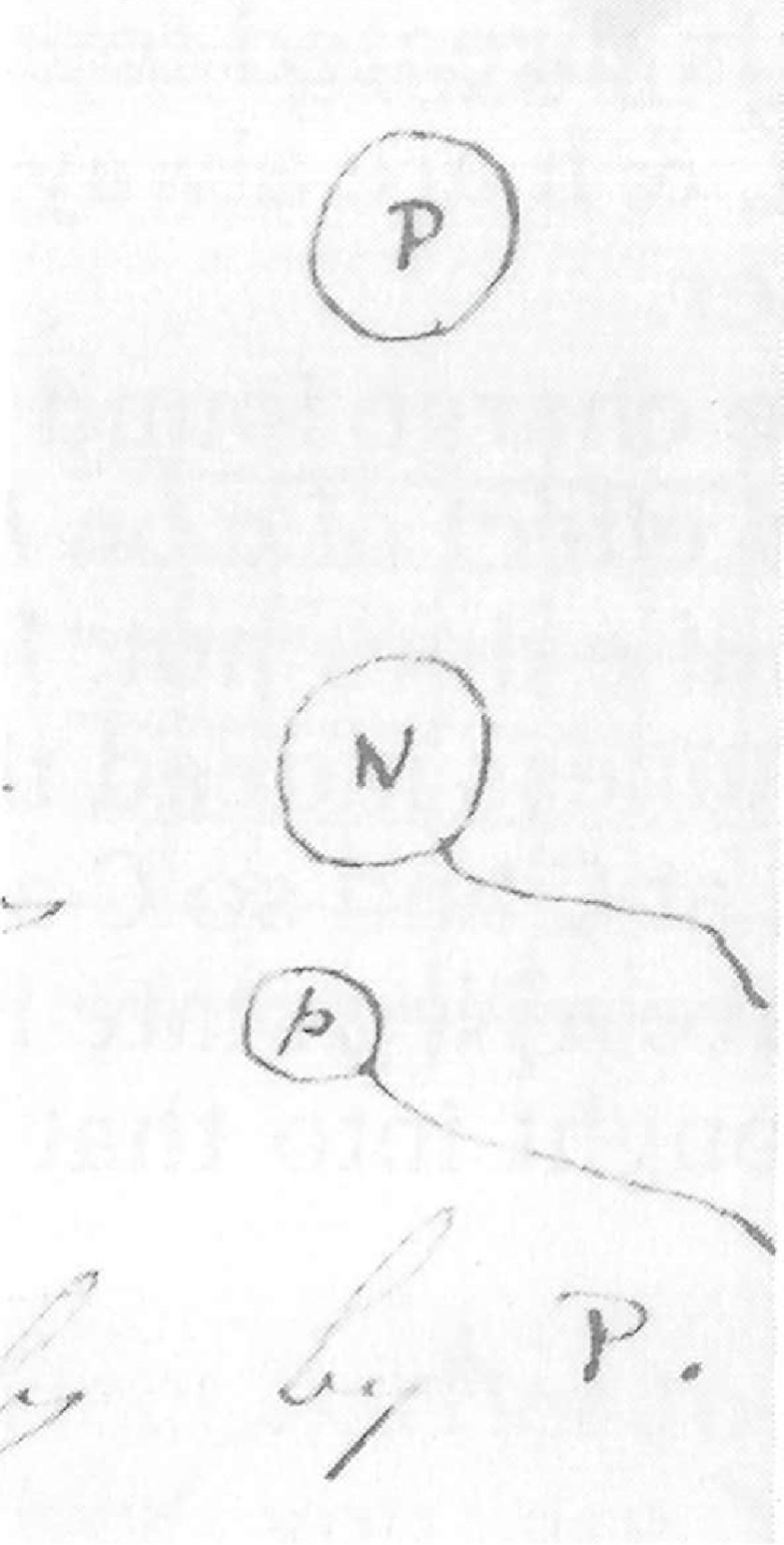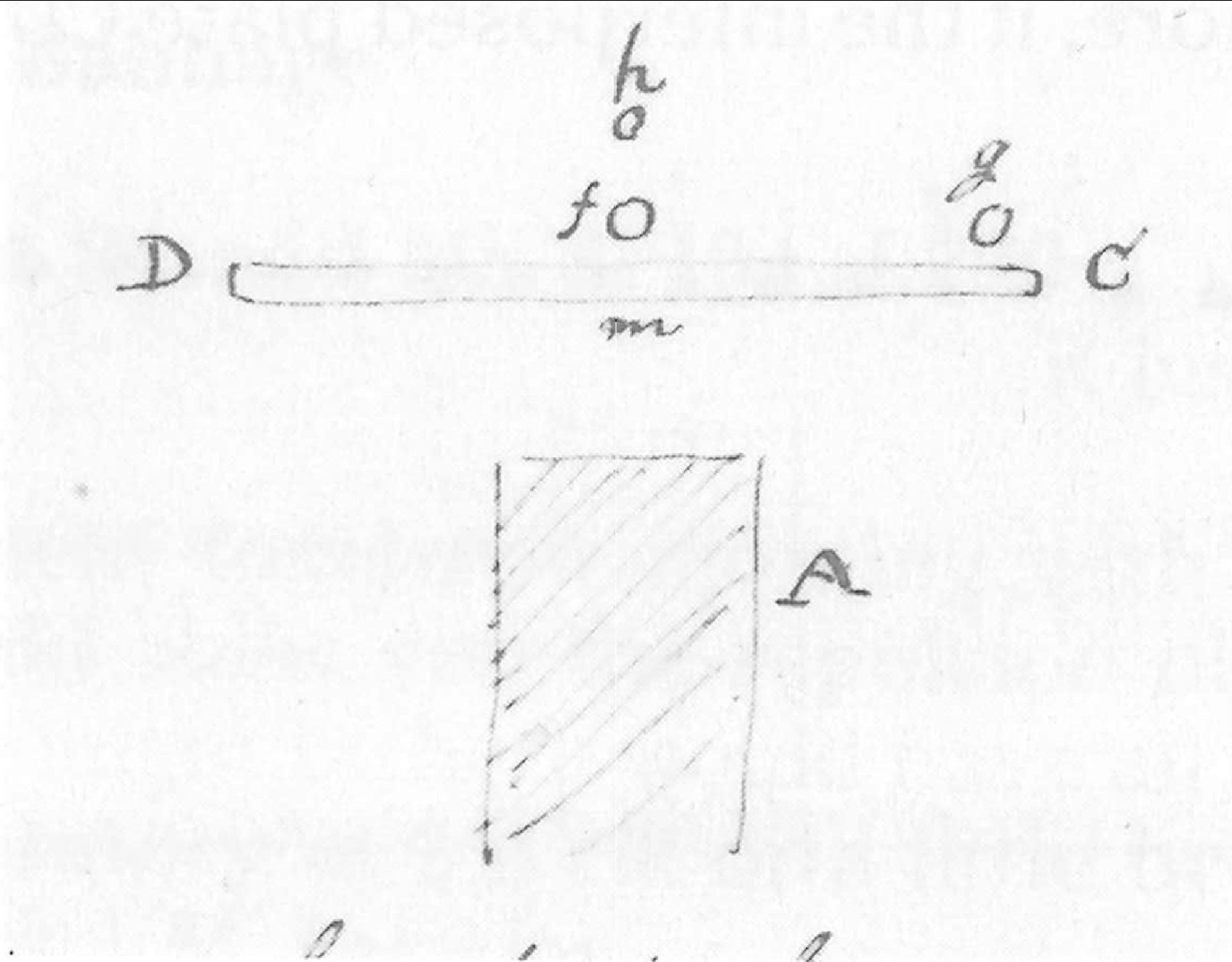Faraday to William Whewell 24 November 18481
Royal Institution | 24 Novr. 1848
My dear Sir
In trying to reply to your objections to induction through curved lines I must premise by stating that I have no idea the action is in curved lines, otherwise, than as it is dependant on the action of the intervening & contiguous matter; and that each curve line may for the moment be looked upon as part of a polygon of an infinite number of sides, these sides or straight lines being the distances between the successive particles.

Then, to examine the question; - when an insulated body is charged, P, it will, by induction, induce the contrary state in an uninsulated conducting body, N, in its vicinity. I have called the first body P, the inductric body, for it sustains the state; to distinguish it from the other, which I have called the inducteous body, whose state is sustained entirely by P. Now N has no relation, by induction, to any other body than P, and cannot induce on other bodies than P:- for, even supposing an uninsulated conductor at p and assuming that N could act by induction on it, still, N & p are uninsulated & therefore in communication with each other; and no induction can take place between bodies which are in conducting communication with each other. They may both be influenced at once by P; but they cannot influence each other.
 Hence, if A in the figure you sent me from (1221)2, (see next page), be Pos., it will make C.D. which is uninsulated Neg. (not especially towards the edge C except by the accumulation of the ends of curved lines there so to speak; for if the plate c be indefinitely extended the maximum of induced effect is at m). But c being neg cannot induce towards f. or h.; first, because all its inductive force is directed towards A, by which its state is sustained; & next, because C, f, & h are always uninsulated & therefore in communication with each other.
Hence, if A in the figure you sent me from (1221)2, (see next page), be Pos., it will make C.D. which is uninsulated Neg. (not especially towards the edge C except by the accumulation of the ends of curved lines there so to speak; for if the plate c be indefinitely extended the maximum of induced effect is at m). But c being neg cannot induce towards f. or h.; first, because all its inductive force is directed towards A, by which its state is sustained; & next, because C, f, & h are always uninsulated & therefore in communication with each other.
Or; if we suppose that the charge found on h is the difference of the effect of A on h, & the assumed effect of c on h: - then at all events A must act on h through curved lines, if c does not; for there is no other way for the power to get from A to h: - unless indeed the difference between A & C be supposed to be established at C and so C act with that difference; - but then, C ought to be Pos to induce a Neg state in h, but it is always neg. and cannot be otherwise being brought into that state by Pos A.

In place of making CD a plate let it be a hemisphere: the effects are equally the same: and in this case, assuming that C could induce towards h, still both its action & the action of A must be through curved lines in the air or surrounding insulating body; through which only induction can take place.
We must remember that it is not the mass of metal which is charged, but solely the surface; and only that part of the surface which is in relation to the Inductric body by inductive action. If the part of the plate C.D near the middle be made of gold leaf there is not the slightest trace of action through the gold. Nay more, if the interposed plate CD be a series of wires

laid side by side all being connected and uninsulated; A., then has no power of inducing any state on h>., even though A may be the knob of a Leyden jar or the conductor of an electric machine in a powerfully excited state & able to give strong sparks to the wires. But if we remove the wires between a & b. then h is affected as in the former case. This is a common experiment with me, using wire gauze in place of wires; & wire gauze of this dimension
 as to space & metal is a perfect barrier to induction through it.
as to space & metal is a perfect barrier to induction through it.
I do not know whether you are acquainted with Mr. William Thomson of St. Peters College Cambridge, but he has entered, I believe, somewhat deeply into the Mathematics of this part of the subject, and tells me that whether upon Coloumbs3 hypothesis of an action in straight lines, or mine of an action in curved lines by means of contiguous particles, the results ought to be exactly the same. His papers are published in some mathematical journal but I do not know the work4[.]
I am My dear Sir | Most Truly Yours | M. Faraday
Revd. Dr. Whewell
Bibliography
FARADAY, Michael (1838a): “Experimental Researches in Electricity. - Eleventh Series. On Induction”, Phil. Trans., 128: 1-40.
THOMSON, William (1846): “On the mathematical theory of electricity in equilibrium”, Camb. Dubl. Math. J., 1: 75-95.
Please cite as “Faraday2129,” in Ɛpsilon: The Michael Faraday Collection accessed on 13 May 2024, https://epsilon.ac.uk/view/faraday/letters/Faraday2129